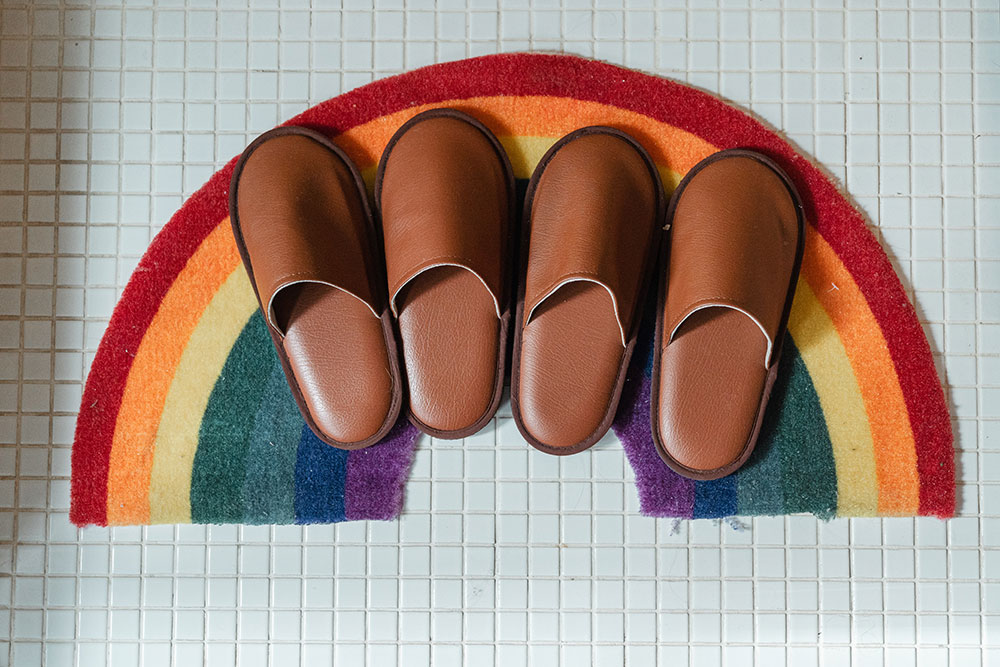Slippers are a type of footwear that is worn indoors and provide comfort, warmth, and protection to the feet. They come in different styles and designs, and are made of various materials. The materials used in slipper manufacturing have evolved over time, ranging from natural to synthetic, and now to sustainable and eco-friendly. In this article, we explore the different materials used in slipper manufacturing and their unique properties and benefits in more detail.
Natural Materials:
Leather: Leather is one of the oldest and most popular materials used in slipper manufacturing. It is a natural material that comes in a range of types and textures, including cowhide, sheepskin, and pigskin. Leather is durable, breathable, and soft, making it an ideal choice for high-quality slippers. It also improves with age and wear, adding character to the slippers. Additionally, leather slippers can be easily cleaned and maintained, making them a practical choice for everyday use.
Sheepskin and Shearling: Sheepskin and shearling are natural materials that offer comfort and warmth, especially during colder months. They are soft, lightweight, and moisture-wicking, making them perfect for slippers. Sheepskin and shearling are often used in the lining and collar of slippers, providing extra warmth and cushioning. They also have antimicrobial properties, which means they are naturally resistant to odors and bacteria, making them a hygienic choice.
Synthetic Materials:
Polyester and Fleece: Polyester and fleece are popular synthetic materials used in slipper manufacturing. They are durable, lightweight, and easy to care for, making them ideal for everyday use. Polyester and fleece are often used in slipper linings, providing insulation and comfort to the feet. They also come in a variety of colors and designs, allowing for more creativity in slipper designs.
Rubber and EVA: Rubber and EVA (ethylene-vinyl acetate) are synthetic materials used in slipper soles. They are durable, flexible, and offer excellent traction, making them ideal for indoor and outdoor slippers. Rubber and EVA are also water-resistant and easy to clean, making them perfect for rainy and snowy weather. Additionally, they are lightweight and comfortable, providing the necessary support and cushioning for the feet.
Sustainable Materials:
Cork: Cork is a natural, sustainable material that is increasingly used in slipper manufacturing. It is soft, lightweight, and moisture-wicking, making it an ideal choice for slipper soles. Cork is also hypoallergenic and eco-friendly, as it is a renewable resource that can be harvested without damaging the trees. It is also biodegradable and recyclable, making it a sustainable choice for environmentally-conscious consumers.
Hemp and Organic Cotton: Hemp and organic cotton are sustainable materials used in slipper manufacturing. They are soft, breathable, and biodegradable, making them ideal for eco-conscious consumers. Hemp and organic cotton are often used in slipper linings, providing comfort and cushioning to the feet. They are also grown without the use of harmful chemicals and pesticides, making them a healthier and safer choice for both consumers and the environment.
Other Materials:
Memory Foam: Memory foam is a synthetic material used in slipper manufacturing that provides superior cushioning and support. It molds to the shape of the foot, providing customized comfort and reducing pressure points. Memory foam is often used in slipper insoles, providing extra cushioning and support to the feet. It is also durable and long-lasting, making it an excellent investment for those looking for high-quality and comfortable slippers.
Recycled Materials: Recycled materials, including recycled rubber and plastic, are increasingly used in slipper manufacturing. These materials are eco-friendly, reducing waste and conserving resources. Recycled materials can be used in different parts of the slipper, including the soles, linings, and uppers. They are durable, water-resistant, and easy to clean, making them practical for everyday use.
In conclusion, slipper manufacturing has come a long way, and the materials used in slipper production have evolved to meet changing consumer preferences and demands. From natural materials like leather and sheepskin to synthetic materials like polyester and rubber to sustainable materials like cork and hemp, there are many options available for slipper manufacturers to choose from. Consumers also have a wide range of choices when it comes to buying slippers, allowing them to prioritize comfort, style, sustainability, or affordability. Ultimately, the choice of material will depend on individual preferences and needs, but it is important to consider the impact of our choices on both our feet and the environment.


